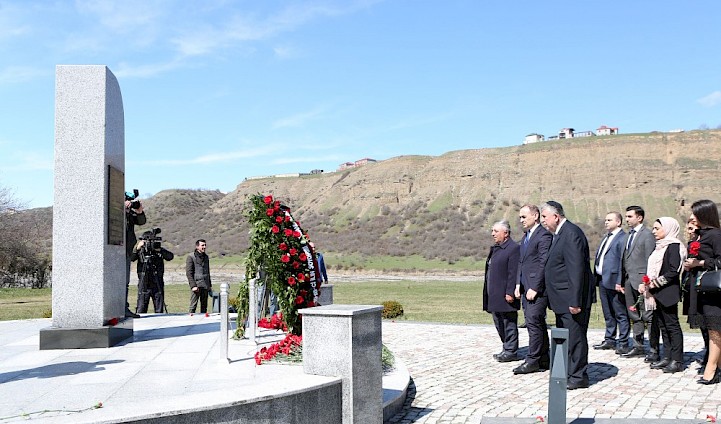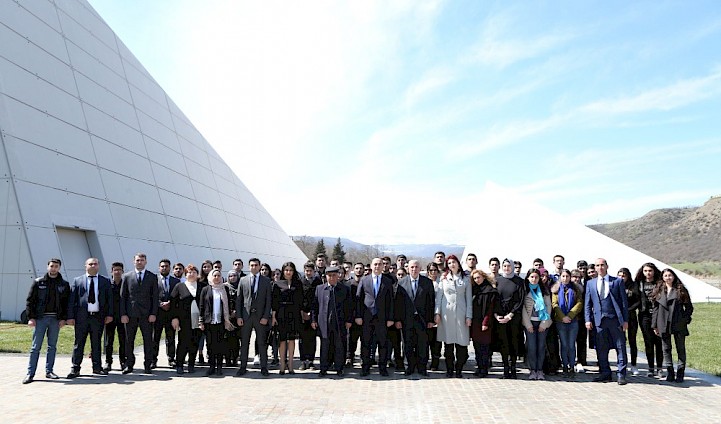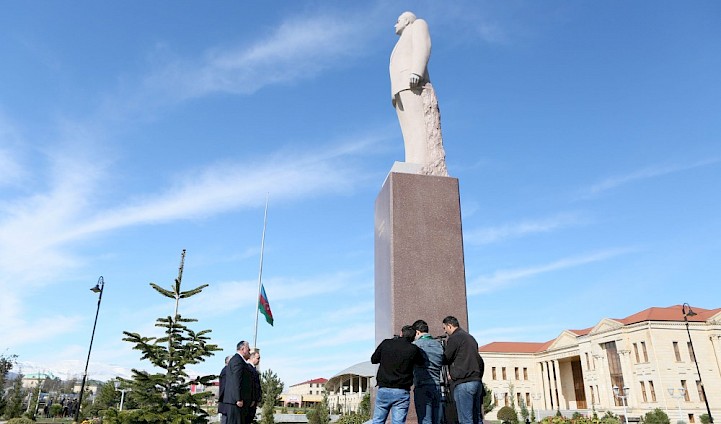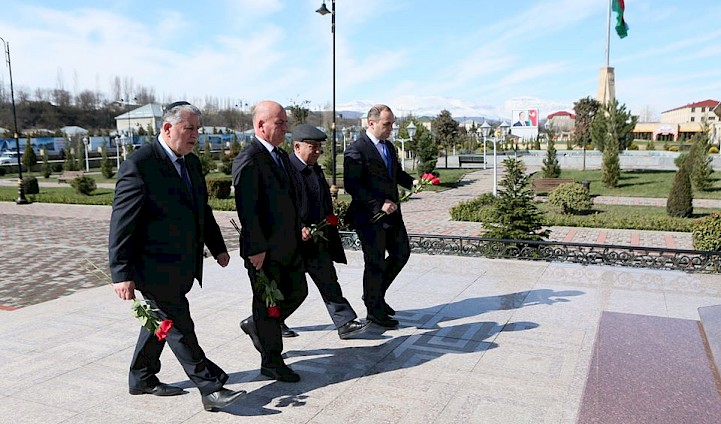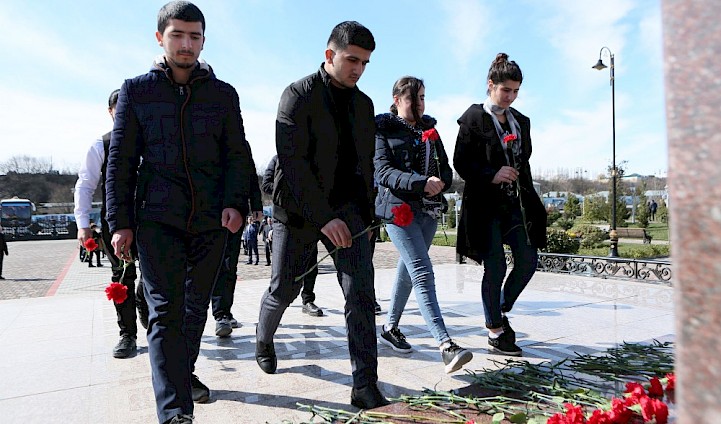Azerbaijan Institute of Theology visited the Quba Genocide Memorial Complex
On March 31, 2019, students and academic staff of Azerbaijan Institute of Theology visited Quba district. The academic staff paid tribute to the memory of national leader Heydar Aliyev laying flowers at the monument.
The Institute team further visited the Quba Genocide Memorial Complex and laid flowers at the monument. During the tragedy, which entered history as one of the worst genocides of the 20th century, Bolshevik-Armenian armed groups committed massacres in Baku, Quba, Shamakhi, Goychay, Javad, Salyan, Garabagh, Zangezur, Nakhchivan, Lankaran, Ganja and other regions; more than a thousand villages were burned and destroyed. 167 villages were destroyed in Quba district; the town was exposed to devastation and fires; Muslim and some Jewish population was massacred.
With Heydar Aliyev’s Order dated March 26, 1998, the genocide was assessed both legally and politically and March 31 was proclaimed “Genocide Day” in Azerbaijan. On January 18, 2018, President Ilham Aliyev signed an Order about the commemoration of the 100th anniversary of the genocide.
The mass grave discovered accidentally during the construction work in Guba in 2007, is a clear evidence of genocide committed by Armenians in Guba. President Ilham Aliyev signed an Order on the establishment of the Quba Genocide Memorial Complex for introducing Armenian nationalists’ territorial claims and aggression policy to the world community, protecting the national memory and perpetuating the memory of the genocide victims.
It was further reported that the Quba Genocide Memorial Complex, built with the support of the Heydar Aliyev Foundation, was put into operation on September 18, 2013. The museum exposition is presented in Azerbaijani, Russian and English. The exposition starts with the photographs reflecting the peaceful life of Guba before the 1918 events. The photos reflecting ancient life, peaceful coexistence of Azerbaijani, Lezgi, Jewish and other peoples and representatives of different sects in Quba are exhibited.
The exposition also displays national leader Heydar Aliyev’s Decree on genocide.
During the massacres, most bodies were missing as they were brutally burned and thrown into the sea. A marble stone was erected to perpetuate the memory of these victims in the center of the hall.
During the visit, the AIT team also visited Sakina khanim, Juma, Ardabil and Haji Jafar mosques in Guba district.
During the visits, the AIT delegation was informed about the worship places. The participants were informed that Sakina khanim mosque dates back to the 19th century.
During the visit to Juma Mosque, the participants were informed that Quba attracted tourists with its architectural style and interesting history.
During the visit to Haji Jafar Mosque, it was reported that the mosque dated back to the 19th century. It was one of the 18 mosques operating during the Soviet period.
The AIT team further visited Ardabil Mosque. The participants were informed about the mosque which was built in the 14th century.
The trips to the regions aim to contribute to the development of students’ patriotic spirit. AIT continues to organize educational activities to instill national spirit in younger generations, strengthen their national affiliation, commitment to the land, as well as their acquaintance with the existing multicultural environment in the country.

